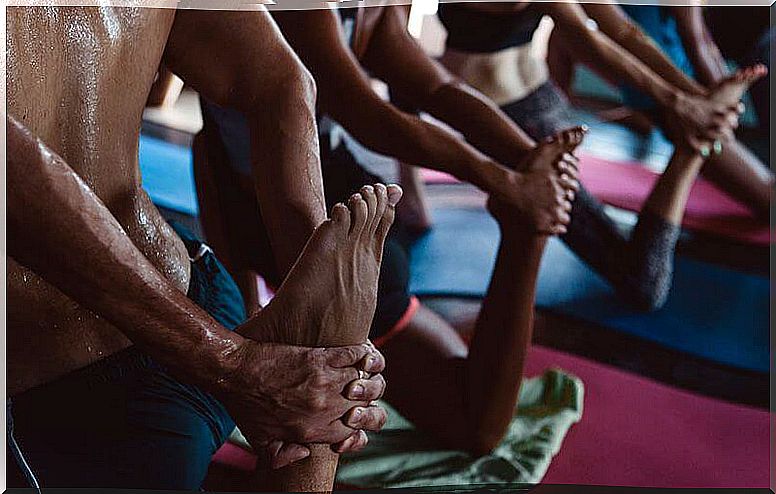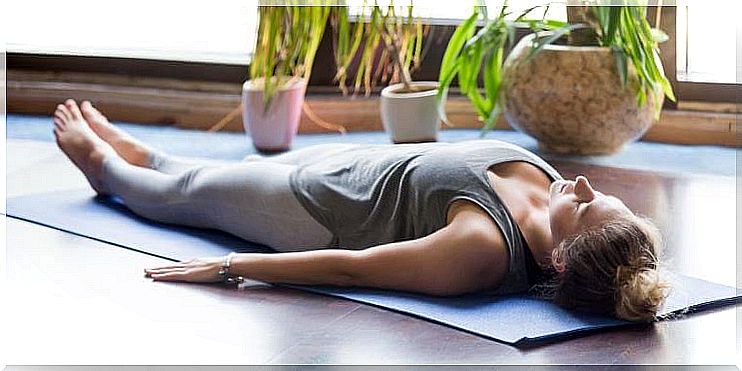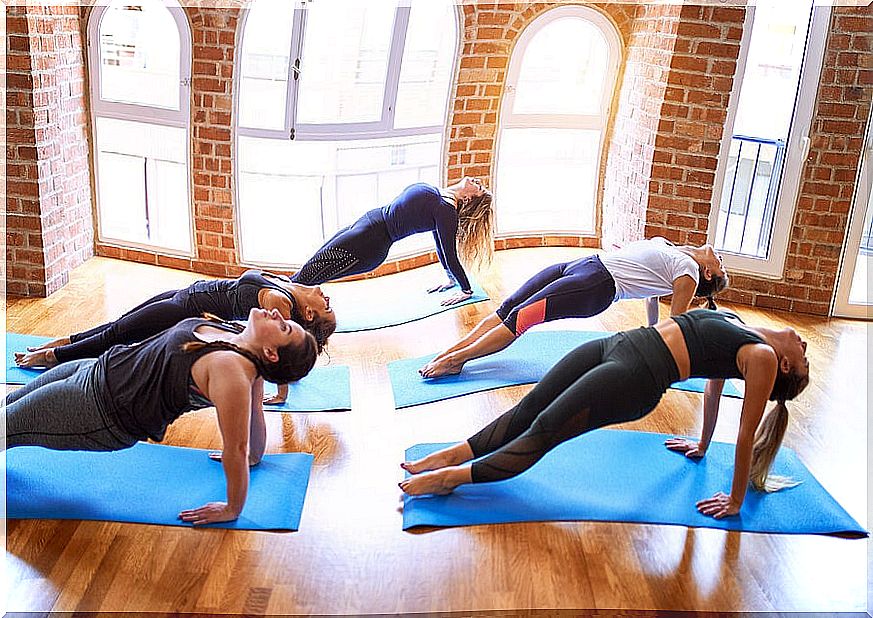5 Tibetan Exercises To Work All Muscles In 10 Minutes
Below are listed 5 exercises or rituals implemented by Tibetan monks for rejuvenation and strengthening of the body. In addition, they help you to fall asleep, relieve joint pain and reduce muscle tension.

Tibetan exercises are a set of practices based on yoga. Therefore, they are not only oriented to work the body, but to promote the union between body and mind. In addition, they help activate the seven chakras and enter a state of full consciousness, thereby also contributing to well-being.
It is said that for 2000 years they have been practiced by Tibetan monks, who argued that the aging process could be – in a way – reversed through its application.
Tibetan exercises help to work all the muscles of the body. However, getting used to it is not always an easy task, much less in just 10 minutes. For this reason, the following article lists the steps that, little by little, will help you learn the techniques and enjoy them.
Exercise 1
In the first exercise of this series you have to adopt a posture as straight and upright as possible while standing, in which the arms should be at shoulder level. The shoulders will have to be in a position parallel to the ground throughout the exercise.
Then, the body must be rotated within the axis, clockwise. Perform about 3 to 6 spins per session. Finally, inhale and exhale only through the nose and consciously to oxygenate the body.
Exercise 2
The second practice consists of laying your body on your back on a yoga mat or mat , stretching your arms along the floor, breathing through your nose, and relaxing your muscles. In this way, while inhaling through the nose deeply, the head and legs should be raised and kept in the air.
Then, while all the air is exhaled until it is empty, the head and legs should be returned to the starting position. After all, it is recommended not to bend the knees, in addition to keeping the shoulders and hips glued to the ground. Repeat 3 or 4 times. It should be noted that controlled breathing is an effective way to lower stress and anxiety levels, so it is important to be aware of the inhalation and exhalation.
A study carried out by the School of Nursing of the Basque Country University showed that breathing has a significant and notable influence on the decrease in degrees of stress.
It was also explained to be a beneficial adjunct for the treatment of nervous tension, post-traumatic disorder, depression, and substance abuse-related medical conditions.

Exercise 3
To perform this exercise, you must get on your knees with your legs parallel to each other and positioned at the width of the hips. On the other hand, the arms should be extended along the body and the hands above the buttocks or lower back.
Then inhale through your nose while leaning your head forward until your chin touches your chest. Then, exhale all the air while bringing your head back and flexing your back. You should try to stretch your chest to the maximum. At the end, with your hands still supported, return to the starting position. Repeat 3 or 4 times.
Exercise 4
In the following exercise, sit on the floor, position your feet shoulder-width apart, and take a deep breath through your nose. Then, place your hands on the floor in such a way that they are parallel to the body, exhale through the nose and raise the buttocks while forming a right angle. It is important to note that the head must be parallel to the body in order to avoid neck injuries.
Finally, you can tense your muscles a little for a few seconds. It is recommended to hold the posture for about 5 breathing cycles.

Exercise 5
As a final exercise, get into a plank position with your hands aligned as well as your shoulders and place your knees below your hips. Then, inhale as your buttocks are raised and press your heels down into an inverted V shape. Also bring the chin towards the chest.
Then, exhale at the same time as you lower your body forward and down, while arching your back and turning your head with your neck stretched out in a curve. Keep the shoulders separated from the ears and the toes leave them back against the ground. Repeat 3 or 4 times with consecutive breathing cycles.
Main benefits of Tibetan exercises

The vital benefits of this practice are varied, for example: they favor the union between body and mind. The regular habit of doing them can help relieve muscle tension and nervous stress. Also, it improves breathing, promotes digestion, benefits the cardiovascular system and leads to deep relaxation and emotional well-being in people. In this way also:
- They oxygenate the body.
- They drain the lymphatic system and help detoxify the body.
- They improve muscle mass as they work on every bone in the body, therefore helping to prevent bone loss.
- They reduce muscle bulges and strengthen the abdominals.
- They optimize body posture and give the spine more flexibility.
Finally, it is important to bear in mind that the regular practice of sports or Tibetan, aerobic or other exercises, will become something positive in the long term for health, since the body is active and the mind healthy. This has been shown in numerous studies, such as this one by the Public University of Navarra, that there are various benefits that can be obtained by practicing any exercise or activity. You just have to be willing and enjoy the process.









